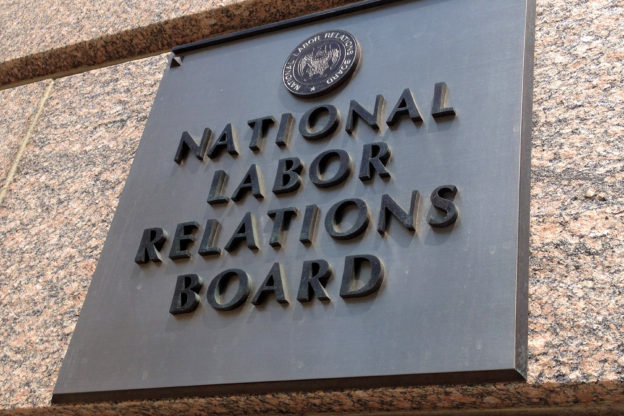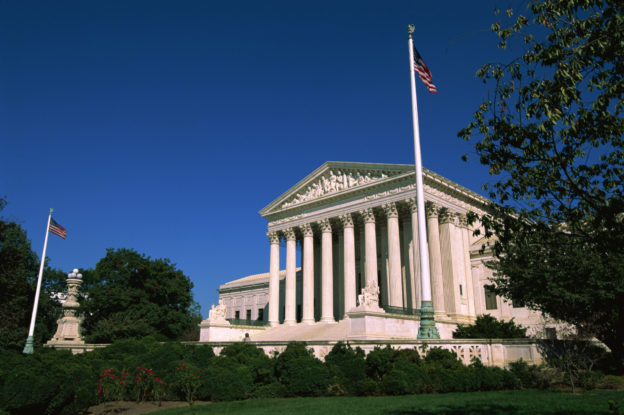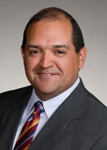
Steven Gutierrez
The Supreme Court of the United States will begin its upcoming session on Monday, October 1, 2018. Currently, eight justices preside over the high court following Justice Anthony Kennedy’s retirement after the end of the last term. As we saw when the Court was short a justice following Justice Scalia’s unexpected death in 2016, the lack of a full nine-justice panel may result in some interesting decisions. Here are highlights of the cases and petitions that employers will want to watch for the upcoming term.
ADEA Application to Small Public Employers
On the Court’s first day of the new term, the justices will hear oral argument in a case that asks whether the Age Discrimination in Employment Act (ADEA) applies to all public employers, regardless of size, or only to those with 20 or more employees. The ADEA prohibits discrimination against applicants and employees who are age 40 or older. An “employer” is defined by the ADEA as “a person engaged in an industry affecting commerce who has twenty or more employees . . .” which clearly sets a 20-employee threshold for private employers. But the ADEA also applies to state political subdivisions (i.e., public employers) and federal appeals courts have disagreed on whether the 20-employee threshold applies to such public employers.
The U.S. Courts of Appeals for the Sixth, Seventh, Eighth, and Tenth Circuits have held that the ADEA applies to public employers of any size. The Ninth Circuit, however, has ruled oppositely, applying the 20-employee threshold to public employers. The Supreme Court granted the petition for a writ of certiorari to resolve the split in the circuits. Mount Lemmon Fire Dist. v. Guido, No. 17-587.
Arbitration Agreements
During its last term, the Supreme Court ruled that arbitration agreements that require an employer and employee to resolve employment disputes on a one-on-one basis, thereby prohibiting class actions, do not violate the National Labor Relations Act. (See post on the Epic Systems Corp. v. Lewis decision here.) This term, additional questions related to arbitration agreements will be before the Court.
In Lamps Plus, Inc. v. Varela, No. 17-988, the Court will hear a case in which an arbitration agreement did not mention or address class arbitration. In its 2010 decision in Stolt-Nielsen, S.A. v. AnimalFeeds International Corp., SCOTUS held that a court could not order arbitration to proceed using class procedures unless there was a “contractual basis” for concluding that the parties have “agreed to” class arbitration. The Court stated that courts may not “presume” such consent from “mere silence on the issue of class arbitration” or “from the fact of the parties’ agreement to arbitrate.” Yet, in the Lamps Plus case, a divided Ninth Circuit panel inferred mutual assent to class arbitration from standard language in the agreement, such as that “arbitration shall be in lieu of any and all lawsuits or other civil legal proceedings.” Consequently, the Supreme Court will review the Ninth Circuit’s decision to determine whether the Federal Arbitration Act (FAA) allows a state-law interpretation of an arbitration agreement that would authorize class arbitration based solely on general language commonly used in arbitration agreements. Oral argument in that case is set for October 29, 2018.
Another arbitration case before the Court this term questions the application of the FAA to independent contractor agreements. In New Prime Inc. v. Oliveira, No. 17-340, the Court must decide whether Section 1 of the FAA, which applies on its face only to “contracts of employment,” is applicable to independent contractor agreements. In that case, an independent contractor had signed a mandatory arbitration provision with an interstate trucking company agreeing to arbitrate all workplace disputes on an individual basis. However, Section 1 of the FAA provides that it does not apply “to contracts of employment of seamen, railroad employees, or any other class of workers engaged in foreign or interstate commerce.” The independent contractor filed a putative class action in court and opposed arbitration based on the Section 1 exemption. The Court also will address whether the FAA’s Section 1 exemption is an arbitrability issue that must be resolved in arbitration rather than by a court. Both parties will argue this case before the Court on October 3, 2018.
Petitions Not Yet Granted
Parties have petitioned the high court to hear other employment-related cases this term. The Court may or may not grant review of these cases, but they raise significant employment issues so are worth reviewing here.
Sexual Orientation Discrimination and Gender Identity Under Title VII
Title VII of the Civil Rights Act of 1964 does not explicitly prohibit employment discrimination on the basis of sexual orientation. Yet, at least three federal appellate courts, the Second, Sixth, and Seventh Circuit Courts, have ruled that Title VII’s ban on sex discrimination extends to prohibit sexual orientation discrimination. The Eleventh Circuit, however, ruled that Title VII does not give rise to a claim for sexual orientation discrimination.
Two petitions are being considered by the Court on this important issue. Altitude Express Inc. v. Zarda, and Bostock v. Clayton County are the two cases up for consideration and should the Court agree to accept review of either (or both), the decision could prove to be one of the most important for employers this term.
In a separate petition by R.G. & G.R. Harris Funeral Homes, an employer is challenging a Sixth Circuit decision that ruled in favor of the Equal Employment Opportunity Commission (EEOC), holding that Title VII applies to employment discrimination based on gender identity. The case involved an employee who was fired after telling her boss that she would be transitioning to a female gender identity and wanted to wear women’s clothing at work. Again, the potential impact of a SCOTUS decision on this issue will be wide-reaching for employers in the U.S.
Gender Pay Inequity
Also up for potential SCOTUS review is the Ninth Circuit’s controversial decision that an employer may not use a person’s prior salary to justify pay disparities. The Equal Pay Act (EPA) prohibits employers from paying men and women differently for the same work, but there are exceptions that include “factors other than sex.” In Yovino v. Rizo, the question is whether salary history qualifies as a “factor other than sex” when employers make pay determinations. The Ninth Circuit said no, salary history is not a factor other than sex. But the Seventh Circuit has stated that salary history is indeed a factor other than sex. The circuit split could make this timely topic ripe for the Supreme Court to accept review.
Labor Cases
At least two labor law cases are seeking SCOTUS review this term. The first, Ohlendorf v. Local 876, UFCW, involves whether a union violates its duty of fair representation if it refuses to allow members to rescind their dues checkoff authorization because the members failed to follow proper rescission procedures. The Sixth Circuit ruled in favor of the union, holding that it acted within its bounds when it continued to collect union dues from a couple of members who didn’t properly rescind their dues checkoff authorization. The workers seek to appeal that decision through SCOTUS review.
Another petition being considered by the Court would address whether a successor employer is obligated to bargain with the predecessor company’s unionized workers when the successor takes over the assets of another business. In Creative Vision Resources v. NLRB, the successor company is challenging a ruling by the Fifth Circuit, enforcing a National Labor Relations Board decision that the company violated federal labor law when it failed to bargain with the predecessor company’s union before imposing initial employment terms and conditions on the workers.
Stay Tuned
As always, we will continue to track these cases and petitions as they make their way through the Supreme Court’s term. Be sure to subscribe to our blog so that you receive our updates.







 By
By 
 By
By 
